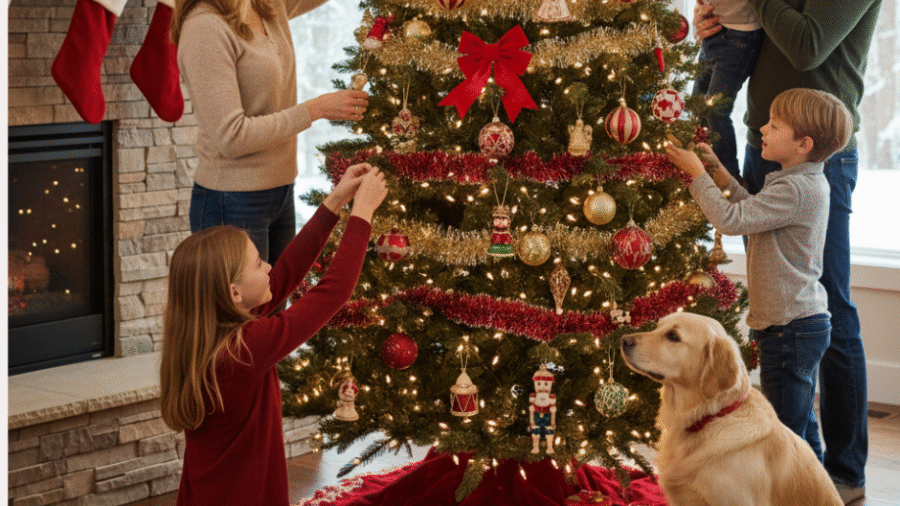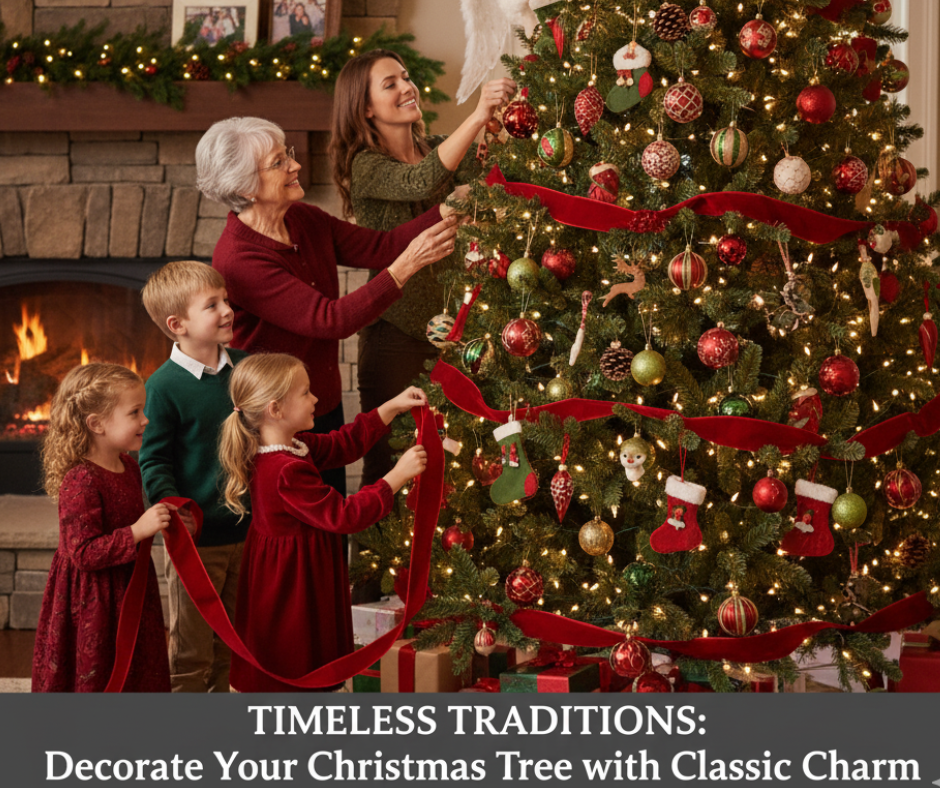The traditional Christmas tree is one of the most iconic symbols of the festive season, evoking nostalgia, warmth, and family togetherness. Decorating this tree is a cherished ritual passed through generations, combining simple elegance with the joyful spirit of Christmas. Whether you’re a first-time decorator or looking to perfect your holiday style, how to decorate a traditional Christmas tree is a delightful art worth mastering.
This article offers a detailed, step-by-step guide on decorating a traditional Christmas tree, blending classic decorations, harmonious color schemes, and timeless ornaments to create a tree full of charm and festive magic.
Choosing the Right Traditional Christmas Tree
Start with a beautiful, fresh tree—usually a fir, pine, or spruce with dense, green branches and good needle retention. The traditional tree is typically natural, but high-quality artificial trees designed to mimic real trees also work well.
Step 1: Fluff and Arrange the Tree
Before decorating, fluff the branches to open spaces and create a full, symmetrical shape. Spread and bend branch tips outward to fill gaps and ensure your ornaments will hang freely and evenly.
Step 2: String White or Warm White Lights
Traditional trees often use white or warm white lights, which provide classic, soft illumination.
-
Test all lights before stringing.
-
Wrap lights evenly from the bottom upwards.
-
Place some lights deeper inside the branches for depth.
-
Use roughly 100 lights per foot of tree height for an even glow.
Step 3: Add Ribbon and Garland
-
Choose ribbons in traditional colors like red, gold, or plaid.
-
Use wired ribbon for easy shaping, weaving spirally or cascading vertically.
-
Garland options include popcorn strings, cranberry strands, or simple metallic tinsel for shimmer.
-
Drape garlands loosely for a natural look or tightly for formal elegance.
Step 4: Hang Classic Ornaments
Traditional ornaments include:
-
Glass balls in red, gold, silver, and green.
-
Bell-shaped decorations, stars, angels, and miniature candy canes.
-
Handmade items such as wooden toys, gingerbread figures, or knitted pieces.
-
Use heirloom or vintage ornaments to add family history and warmth.
Evenly distribute ornaments, mixing large and small sizes for balance.
Step 5: Place the Tree Topper
Select a classic tree topper—often a star or angel. These symbols reflect holiday spirituality and provide a crowning touch to your tree.
Attach securely to prevent falling.
Step 6: Add the Tree Skirt
A traditional fabric tree skirt—often red, velvet, or plaid—completes the look and hides the stand.
Optionally, place wrapped gifts around the base to add color and festivity.
Traditional Color Schemes for Your Tree
-
Red and Gold: Iconic and warm, symbolizing prosperity and joy.
-
Green and Gold: Elegant and natural, highlighting evergreen and festive sparkle.
-
Red and White: Classic Christmas colors, often paired with candy cane motifs.
-
Plaid Patterns: Especially in ribbons and skirts, evoking cozy, heritage charm.
Tips for a Timeless Traditional Tree
-
Use quality ornaments and ribbons.
-
Avoid over-cluttering; leave breathing space for each decoration.
-
Incorporate natural elements like pinecones or fresh holly.
-
Maintain balanced placement and symmetry.
-
Integrate family heirlooms for personal meaning.
Read More: How to Make a Christmas Tree Stand: A Comprehensive DIY Guide for a Secure and Stable Holiday Tree
Conclusion
Decorating a traditional Christmas tree is about embracing time-honored beauty, meaning, and togetherness. With careful selection of classic lights, ribbons, ornaments, and topper, anyone can create a festive centerpiece radiating warm nostalgia and holiday spirit.



Add a Comment